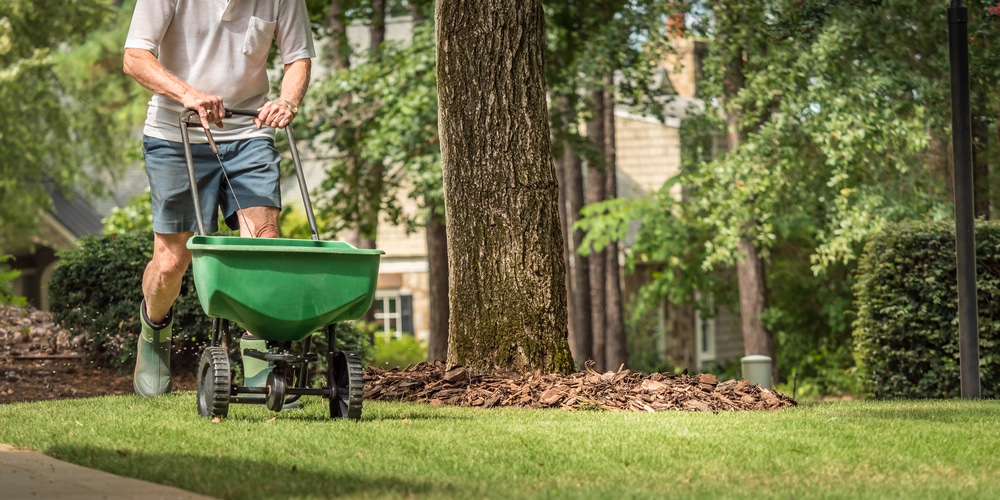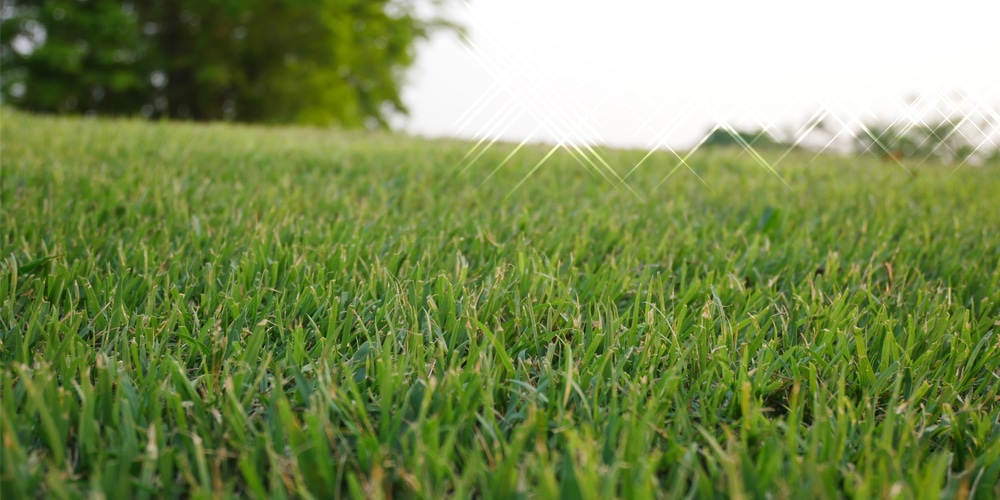It takes time and dedication to create and maintain the perfect lawn. If you live in North Carolina, you may have a warm or cool-season lawn as all grass varieties grow well. With the correct maintenance, your lawn can grow green and healthy.
Lawns need to be regularly fertilized, aerated, and overseeded to allow the grass to look its best. Regular maintenance at the correct time of year will allow you to create a lawn you can be proud of. You may even find that your lawn is the envy of your neighborhood. Let’s look at when to fertilize your lawn in North Carolina to keep the grass looking its best.
Lawn Fertilizing Schedule NC

Fertilizing a lawn in NC takes some planning. How you care for your lawn will depend on the type of grass you have and the climate where you live. In North Carolina, both warm-season and cool-season grasses do well.
Homeowners in NC will have warm-season grasses such as Zoysia, Bermuda, Centipede, or St. Augustine. However, your lawn may be a cool-season grass such as fescue, bluegrass, or ryegrass. Here’s an annual lawn care schedule with fertilizing tips to help keep your lawn in good condition.
Fall: October to November
Many homeowners fertilize their cool-season grasses at the beginning of fall as this is the start of the growing season for these varieties.
If you have a warm-season lawn such as Bermuda grass, your grass will go dormant over the winter and won’t need to be fertilize d at this time. Once it wakes up in the spring, here’s how to make Bermuda grass thicker.
Spring: March to May
At the beginning of spring, warm-season grasses will begin to grow and turn greener; this is the time to start fertilizing. You can also reseed or overseed Fescue lawns and feed the new seeds with a starter fertilizer.
Warm-season grasses such as Zoysia, Bermuda, Centipede or St. Augustine can be fertilized in March or April. These grasses can then be fertilized every couple of months during the growing season. Some gardeners recommend feeding your grass every month.
Summer: June to September
You can continue to fertilize your warm-season lawn throughout the summer months. Apply a fertilizer every four to eight weeks during the growing season from May to September.
You can use a potassium fertilizer on Centipede lawns, which will help it stay healthy over the winter months. At the end of September, you can reseed your Fescue lawn and overseed patchy areas. Use a new lawn starter fertilizer to help the seeds germinate and put on new growth quickly.
Fertilizing Your lawn NC
As well as developing a regular fertilizing schedule, it’s a good idea to test your soil every two or three years to check the pH and nutrient levels. This will allow you to find out whether your lawn has any nutrient deficiencies, and you’ll then be able to give your grass the correct feed.
Most lawns in North Carolina should also be given lime annually to help keep the pH in the correct range. You can apply lime to your lawn at any time of the year. Be careful to apply the right amount; you shouldn’t use more than forty pounds of lime for each one hundred square feet of lawn.
Most warm-season lawns should have a PH of between 6.0 and 6.5. If you’re having problems with your grass, it may be a good idea to test the soil’s PH levels rather than giving the grass extra fertilizer. Too much fertilizer can sometimes be a bad thing and, in the worse cases, will even kill your lawn.
Conclusion
Taking the time to fertilize your lawn in NC will help to improve its health. Before deciding when to apply fertilizer, you should first determine whether you have warm or cool-season grass. Aeration can help a lot with warm or cool season grasses.
Fertilizer can help your lawn grow, dense and green. It will look great and maintain its health throughout the year, and allows grasses to resist disease. It’s a good idea to fertilize your lawn at least every two months during the growing season.
You may also like to test your soil’s PH levels every couple of years and apply lime annually to help improve soil quality.
